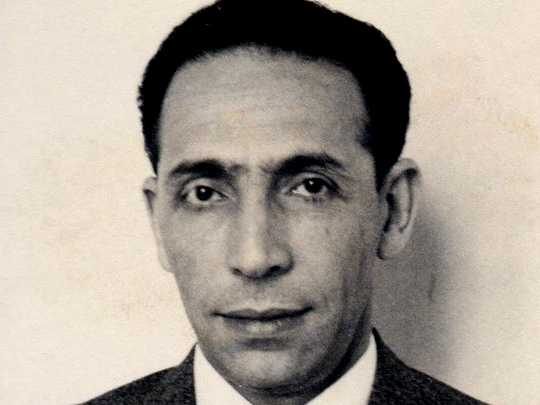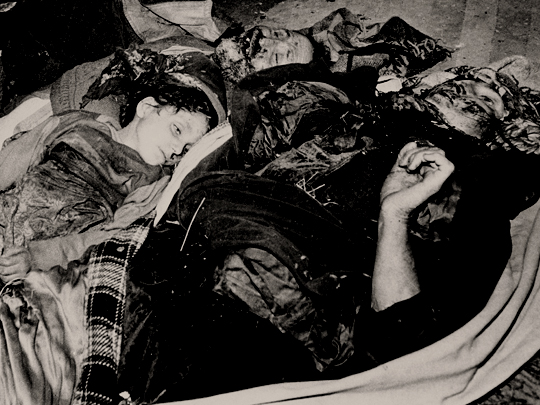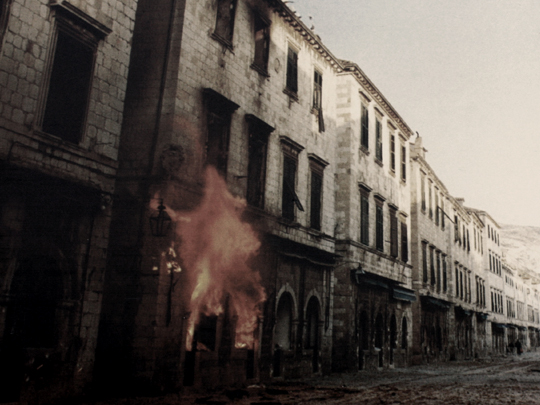Wikimedia Commons / CC-BY-SA-3.0 / GFDL
1 – Breakup of Yugoslavia Leads to Numerous Ethnic Conflicts
The breakup of Yugoslavia was a process in which the Socialist Federal Republic of Yugoslavia was broken up into independent republics, during which the Yugoslav wars started.
The process essentially began following the death of Yugoslav dictator Josip Broz Tito on 4 May 1980.
On 27 April 1992, the breakup of the Socialist Federal Republic of Yugoslavia ended when Serbia and Montenegro proclaimed the Federal Republic of Yugoslavia.
The Yugoslav Wars were a series of related ethnic conflicts and wars of independence fought between 1991 and 2001, leading to the breakup of the Yugoslav state.
Its constituent republics of Slovenia, Croatia, Bosnia and Herzegovina, Serbia, Macedonia, and Kosovo, sought independence, despite unresolved tensions between ethnic minorities in these countries, fueling the conflicts.
In 1995, the Dayton Agreement, a US-sponsored peace deal in Dayton, Ohio, signaled the end of the war in the western parts of former Yugoslavia. Five years of war had led to an embargo, causing the collapse of the economy.
The Kosovo War started in 1996 and ended with the 1999 NATO bombing of Yugoslavia, with Serbian leader Slobodan Milošević falling from power in October 2000.
FR Yugoslavia continued to exist until 2003 when it was reformed as the state union of Serbia and Montenegro and lasted until 5 June 2006 when Montenegro proclaimed independence.
In February 2008, Kosovo proclaimed its independence from Serbia.
The Yugoslav Wars were Europe’s deadliest conflicts since World War II, with many war crimes, including genocide and crimes against humanity occurring.
Human Rights groups estimate at least 130,000 people were killed during the conflicts.
The Bosnian genocide was the first crime to be formally judged as genocidal in character since World War II in Europe, with many of the key participants subsequently charged with war crimes.
2 – Algerian Head of State, Mohamed Boudiaf, Assassinated by His Bodyguard

On 29 June 1992, Boudiaf was killed by one of his own bodyguards, Lambarek Boumaarafi, an Islamic fundamentalist acting alone.
He was assassinated in Annaba while addressing a public meeting, shot twice in the head and once in the back.
Boudiaf was one of the founders of the revolutionary National Liberation Front that led the Algerian War of Independence from 1954 to 1962.
He went into exile in Morocco shortly after Algeria winning independence.
In February 1992, after a 27-year exile, Boudiaf accepted an invite from the Algerian military to become chairman of the High Council of State Algeria following the annulment of election results.
He was presented as a leader who had been exiled for too long to be tainted by the violence and corruption of Algeria’s post-revolutionary politics, but he was also little known to most of the Algerian public.
Boudiaf quickly gained popularity by calling for comprehensive reform and an end to military domination of politics. However, even as the head of state, Boudiaf’s powers were limited by the military establishment.
At the same time, tensions continued to rise within the country, seeing increasing Islamist violence in the vicinity of Algiers being met with brutal countermeasures by the military. These tensions ultimately led to Boudiaf’s death after only five months in power.
The murder caused great shock in Algeria and remains a hugely significant moment in the country’s modern history.
3 – John Gotti Sentenced to Life in Prison Without Parole

Gotti, known as the “Teflon Don” after being acquitted in three high-profile trials during the 1980s, was an Italian-American gangster who became boss of the Gambino crime family in New York City.
After living a life of crime from an early age, Gotti organized the murder of Gambino boss Paul Castellano in December 1985.
He took over the family shortly after, making Gotti the boss of America’s most powerful crime syndicate.
Among the criminal activities that made them hundreds of millions of dollars annually were racketeering, drug trafficking, prostitution, extortion, and illegal gambling.
On December 11, 1990, FBI agents and NYPD detectives arrested Gotti, his underboss “Sammy the Bull” Gravano and Frank Locascio.
In November 1991, Gravano agreed to turn state’s evidence and testified for the prosecution against Gotti.
On April 2, 1992, after only fourteen hours of deliberation, the jury found Gotti guilty on all charges of the indictment, while Locascio was found guilty on all but one.
Gotti was convicted of five murders, racketeering, tax evasion, and numerous other charges.
He was sentenced to life in prison without parole. He died of throat cancer in 2002 at the age of 61.
4 – Khojaly Massacre – Over 600 Civilians Killed by Armenian Armed Forces

The Khojaly Massacre was the killing of at least 161 ethnic Azerbaijani civilians from the town of Khojaly on 26 February 1992.
The massacre was part of a territorial dispute and ethnic conflict between Armenia and Azerbaijan over the region of Nagorno-Karabakh and the surrounding districts, which is recognized as part of Azerbaijan.
According to Human Rights Watch and other international observers, the massacre was committed by ethnic Armenian armed forces, with the reported help of military personnel from CIS, an organization of post-Soviet republics, acting without orders from their command.
Azerbaijani authorities claim the death toll was 613 civilians, including over 100 women and 60 children.
The event was to be the largest massacre in the course of the Nagorno-Karabakh conflict.
A cease-fire was signed in 1994, which provided for two decades of relative stability until an escalation in hostilities in April 2016.









